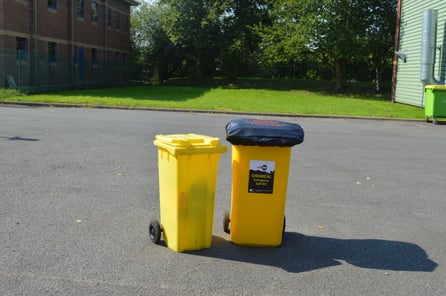Having a spill kit on site is a good start, but have you really got sufficient coverage in the...
Do you know your spill scenarios?
Despite everyone’s best efforts in some businesses spills will happen. Preventing a spill would always be the first step but if you cannot prevent it, reducing the risk would be the next stage to explore. Its important for businesses and employees to understand the difference of day-to-day leaks and spills and an emergency spill. These are 2 very different scenarios but being prepared for both is crucial.
What is a day-to-day leak or spill
These spills may be daily occurrences and usually minor in nature. Typically small in volume with manageable impact to safety and the environment. 
Examples of day-to-day spills include (but not limited to):
- Decanting liquids
- Machinery overspray
- Dripping tap
- Maintenance leaks
What is an emergency spill?
This is an unexpected spill of any quantity which could pose significant danger to health, safety or the environment. Emergency spills may involve large volumes of liquid or hazardous substances which if not managed effectively could have irreversible damage. An immediate and co-ordinated response is required to contain and manage the emergency spill.
- A ruptured hose or pipeline
- A container punctured with a forklift
- A failed IBC, drum or container
- A vehicle fuel leak
- A container fallen over
- Vandalism
- And so on
Generally day-to-day spills are routine and manageable while emergency spills require urgent action due to their potential impact. It’s essential you are prepared for both scenarios to ensure you have adequate equipment on site.
How should we manage the different types of spills?
For daily leaks and spills you should provide your teams with easy access to absorbents and equipment to ensure efficient management and clean work spaces, this could be a roll of absorbent pads, a box of absorbent socks, some wiper rolls and cleaning equipment. As a result operators don’t need to utilise emergency spill kits for day to day leaks and spills. We suggest having strategically placed stations around your site, these could be labelled cabinets, stations, carts or containers. Stations are usually fixed in a location (not on wheels) so operators have absorbents to hand for general leaks and spills, providing easy access to maintaining their working area.
Any potential for emergency spills, should have an emergency spill kit assigned to the area. These should only be used in an emergency as they will contain enough equipment for a specific risk. If the emergency spill kits are used for daily leaks and spills, if you are then faced with an emergency you may not have sufficient equipment.
Both spill stations and emergency spill kits must be regularly checked, maintained and replenished to ensure equipment is available at all times. Regular reporting may also benefit to highlight specific areas that use more equipment and may need another risk assessment to identify why spills are occurring more frequently.
How do I know if I need a spill station or a spill kit?
Most businesses need a combination of spill stations and spill kits, as well as other equipment for specific areas.
In reality there is no single answer as to what is required on your site, as it is unique. It’s important you understand the options available so you can make an informed decision based on the spill risks.
Once you are confident you have sufficient equipment available ensure its well signposted with clear instructions on how to use and educate your team in best practice for managing spills, whether they be regular small drips or large scale accidents, so they can make the right choices.
How do I stop my colleagues using a spill kit for non-emergencies? 
By providing well signposted spill equipment and training, your colleagues should understand the difference between day to day leaks and emergency spills. Good labelling on equipment will provide details to those using the equipment as well as deterents for making the wrong choice. We would recommend using a tag for spill kits, we use plastic audits tags to close the lid. These tags are easy to break in an emergency but make the user think twice about the urgency of using the kit. We also recommend the use of audit covers. These not only protect external kits from the weather, they also make the user stop and think about whether they really need to use the kit.
Why not let us help you?
Our spill survey is available to support businesses like yours in understanding your potential spill risks and explaining solutions that are available to you. It’s carried out with no obligation and provides you with an overview of how your site is performing, and areas in which you can improve to ensure you are compliant. Working with you to understand your site and the processes you undertake we can support you in providing options and products to overcome your challenges.
You can read more about our spill survey or contact our team to discuss your requirements on 01606 352 679



